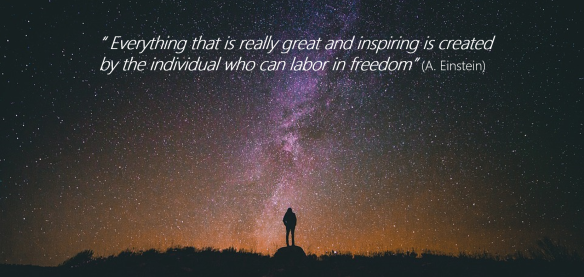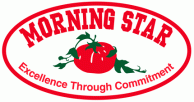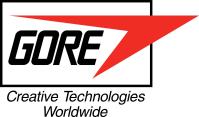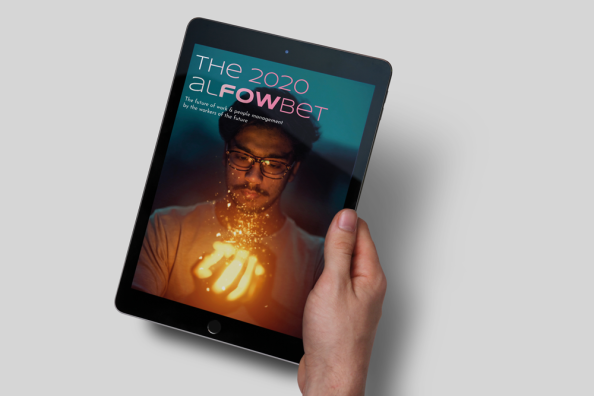
I wanted to share today a couple of the ideas coming from the outstanding research carried out by Belgian author Frédéric Laloux for his book “reinventing organizations”. Laloux has studied around 30 organizations in different sectors and regions of the world and despite the fact that they did not know each other, all of them have something in common: they have found similar innovative practices to fight the frustration, silos, hierarchy, ego fights and lack of engagement present in many companies nowadays. In other words, he studies organizations reinventing themselves because they consider that current systems have reached their limits. That is why he speaks about the emergence of a new paradigm based on more inspired and inspiring ways of seeing management and cooperation.
According to him, the organizations that are the most adapted to current VUCA world (volatile, uncertain, complex and ambiguous) are self-organized companies with flat structures, a distributed decision making and a flexible purpose, able to adapt to new opportunities and needs. He names these organizations “teal” (some kind of blue-green color) and considers they are the most evolved type nowadays. Less self-organized and adaptable kinds of organizations include for him: green organizations (focused on shared values and empowerment), orange ones (focused on competition, meritocracy and profit), amber ones (focused on control and processes) and ultimately, red ones (focused on authority and fear). This was a really express presentation of his classification. Check references if you want to go deeper on this.
Teal organizations therefore have a brand-new way of seeing management and cooperation. We are speaking about a non-hierarchical system that allows any employee in these companies to make any decision for the organization as long as he/she has checked it with experts and people impacted by this decision. This does not mean that a consensus must be reached, just that their opinions have to be considered when making this new decision. This self-organizing mode may not work for everyone (some people just want to be told what to do at each moment) but these new systems can really unleash the creativity, passion, proactivity and engagement that many current organizations do not manage to reach via traditional practices. Let’s see a couple of innovative HR practices coming from teal organizations. More concretely, I am going to present original remuneration policies in two companies in which salaries are not decided by hiearchy or through salary grids: Morning Star and W.L.Gore & associates.
 Morning Star is a large tomato transporting and processing company, transporting 70% and processing 50% of all the tomatoes in the US. The company has 400 full time employees and they go up to 2,400 in the most active moments of the year. They have a very innovative way of calculating staff remuneration, that we could call “self-set and advice-based salary system”. At the end of the year, each employee has to write a letter to the company explaining the % of salary raise they think they deserve (if any, and on top of inflation). They can add to this request any documents highlighting some of their achievements of the year and the feedback of colleagues. Within this original “advice process”, a dedicated committee treats all the requests by calibrating them, that is, putting them together and in order to compare and grade them. Some humble employees having only asked for the minimum raise linked to inflation will then be advised by this committee to ask for a higher raise considering their accomplishments. At the opposite side, a few colleagues will be proposed not to ask such a high raise, as this does not make sense taking into account this big picture of all the employees.
Morning Star is a large tomato transporting and processing company, transporting 70% and processing 50% of all the tomatoes in the US. The company has 400 full time employees and they go up to 2,400 in the most active moments of the year. They have a very innovative way of calculating staff remuneration, that we could call “self-set and advice-based salary system”. At the end of the year, each employee has to write a letter to the company explaining the % of salary raise they think they deserve (if any, and on top of inflation). They can add to this request any documents highlighting some of their achievements of the year and the feedback of colleagues. Within this original “advice process”, a dedicated committee treats all the requests by calibrating them, that is, putting them together and in order to compare and grade them. Some humble employees having only asked for the minimum raise linked to inflation will then be advised by this committee to ask for a higher raise considering their accomplishments. At the opposite side, a few colleagues will be proposed not to ask such a high raise, as this does not make sense taking into account this big picture of all the employees.
The interesting thing is that each employee can then decide whether or not to follow the committee’s advice and grant him/herself the initially desired amount. However, as all the information is available to all staff, if an employee decides not to respect the proposal of the “advice process”, he/she will have the pressure to prove why they were worth more than what the neutral committee proposed… in terms of figures, 25% of the staff asks a raise beyond inflation every year, but only 4 our 5 employees a year are advised to lower their request and most of them do. Other companies like Buffer or Hanno have similar salary systems.
 W.L.Gore & associates is a global conglomerate industrial company of 10,000+ people, known among others for having created the Gore-tex technology, one of their most popular and successful products. The company is also a reference on the market concerning self-management practices, which is confirmed by their innovative remuneration system based on a peer review process.
W.L.Gore & associates is a global conglomerate industrial company of 10,000+ people, known among others for having created the Gore-tex technology, one of their most popular and successful products. The company is also a reference on the market concerning self-management practices, which is confirmed by their innovative remuneration system based on a peer review process.
Once a year, each employee is asked to rank his/her colleagues from 1 to 9 according to past and expected future contribution to the success of the company, but also according to the quantity and quality of interactions and cooperation with each colleague. The aggregate results allow the company to have a ranking that will help them establish the salaries for the year, making sure that the pay curve is in line with contributions. If needed, a committee can slightly amend the rankings if they have the impression that they do not totally reflect the observed reality (eg. some peers giving votes based on loyalty or friendship and not only on real contribution). The results are then communicated to each employee, not necessarily giving the exact place in the ranking, but rather sharing a position in the top/middle/bottom zone, including mobility/training measures for the bottom area. Other companies use similar peer ranking remuneration systems, such as HolacracyOne, but in this one, each employee includes him/herself in the review and ranking too.
I hope you enjoyed these innovative people practices. As usual, the idea here is not to propose perfect solutions, as of course those do not exist, but rather share innovative and inspiring practices that could make you challenge your own ones… check references for more examples.
References
“Revintenting organizations”, by Frederic Laloux (book): http://www.reinventingorganizations.com/
Wiki is based on this same book and including a lot of innovative “people” practices: http://www.reinventingorganizationswiki.com
Laloux’s full conference presenting his book (in French only, sorry): https://www.youtube.com/watch?v=NZKqPoQiaDE
A very good video on Laloux’s 5 types of organisations: https://vimeo.com/121517508



 Morning Star is a large tomato transporting and processing company, transporting 70% and processing 50% of all the tomatoes in the US. The company has 400 full time employees and they go up to 2,400 in the most active moments of the year. They have a very innovative way of calculating staff remuneration, that we could call “self-set and advice-based salary system”. At the end of the year, each employee has to write a letter to the company explaining the % of salary raise they think they deserve (if any, and on top of inflation). They can add to this request any documents highlighting some of their achievements of the year and the feedback of colleagues. Within this original “advice process”, a dedicated committee treats all the requests by calibrating them, that is, putting them together and in order to compare and grade them. Some humble employees having only asked for the minimum raise linked to inflation will then be advised by this committee to ask for a higher raise considering their accomplishments. At the opposite side, a few colleagues will be proposed not to ask such a high raise, as this does not make sense taking into account this big picture of all the employees.
Morning Star is a large tomato transporting and processing company, transporting 70% and processing 50% of all the tomatoes in the US. The company has 400 full time employees and they go up to 2,400 in the most active moments of the year. They have a very innovative way of calculating staff remuneration, that we could call “self-set and advice-based salary system”. At the end of the year, each employee has to write a letter to the company explaining the % of salary raise they think they deserve (if any, and on top of inflation). They can add to this request any documents highlighting some of their achievements of the year and the feedback of colleagues. Within this original “advice process”, a dedicated committee treats all the requests by calibrating them, that is, putting them together and in order to compare and grade them. Some humble employees having only asked for the minimum raise linked to inflation will then be advised by this committee to ask for a higher raise considering their accomplishments. At the opposite side, a few colleagues will be proposed not to ask such a high raise, as this does not make sense taking into account this big picture of all the employees. W.L.Gore & associates is a global conglomerate industrial company of 10,000+ people, known among others for having created the Gore-tex technology, one of their most popular and successful products. The company is also a reference on the market concerning self-management practices, which is confirmed by their innovative remuneration system based on a peer review process.
W.L.Gore & associates is a global conglomerate industrial company of 10,000+ people, known among others for having created the Gore-tex technology, one of their most popular and successful products. The company is also a reference on the market concerning self-management practices, which is confirmed by their innovative remuneration system based on a peer review process.